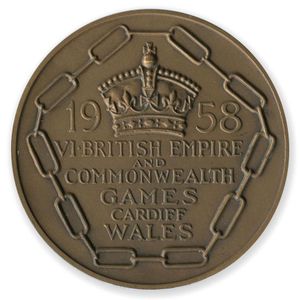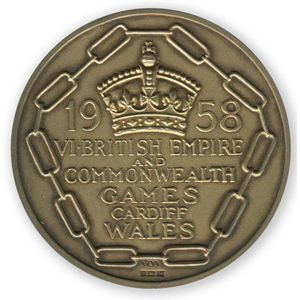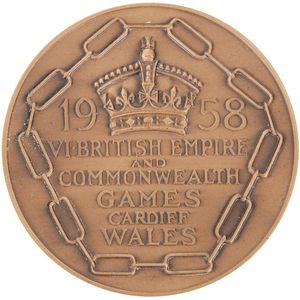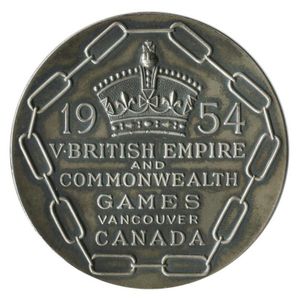Gold Medalist Nick Gargano at 1954 British Empire Games
You must be a subscriber, and be logged in to view price and dealer details.
Subscribe Now to view actual auction price for this item
When you subscribe, you have the option of setting the currency in which to display prices to $Au, $US, $NZ or Stg.
- Runners - Runners or slides are wood on each side of the bottom of a drawer, being the surfaces which take the weight of the drawer and provide for its movement in and out. The runners of a drawer are usually the first areas of a drawer to display wear, due to the friction between the two surfaces. In modern cabinet making the wooden runners on th ebottom of the draer have been replaced by metal runners fixed to the side of the drawer and the side of the cabinet.
- Bronze - An alloy of copper and tin, traditionally in the proportions of about 9 parts of copper to 1 part of tin.
The discovery of bronze in Western Asia in the 4th century enabled people to create metal objects which were superior to those previoulsy possible because of its strength and hardness, and it has been used throughout the world for weapons, coins, tools, statuary and other decorative items.
It is very fluid in a molten state, and its hardness, strength when set, and non-corrosive properties makes it most suitable for casting sculpture.
This item has been included into following indexes:
Visually similar items

1958 British Commonwealth Games in Cardiff, Participation Medal '1958 VI.British Empire and Commonwealth Games, Cardiff, Wales', 54 mm diameter, in original presentation case.

1958 British Commonwealth Games in Cardiff, Participation Medal '1958 VI.British Empire and Commonwealth Games, Cardiff, Wales', hallmarked silver gilt, 54 mm diameter, 70.97 grams, in original presentation case.

1958 British Commonwealth Games in Cardiff, Participation Medal '1958 VI. British Empire and Commonwealth Games, Cardiff, Wales', 55 mm diameter, in original presentation box. Ex Dr.J. Matthews, the British team doctor. Superb condition

1978 Commonwealth Games in Canada, Participation Medal '1978 XI Commonwealth Games/Edmonton, Canada', bronze, 43 mm diameter. The Edmonton Games attracted 47 teams totalling 1475 athletes competing in 128 events. Canada was the most successful team, winnin
